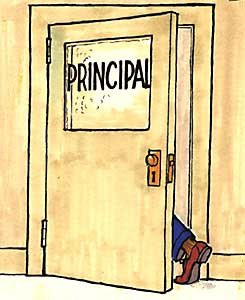Violent Deaths at School
- From July 1, 2009 through June 30, 2010, there were 33 school-associated violent deaths in elementary and secondary schools in the United States.
- The victimization rates for students in 2010 varied according to student characteristics. No measurable differences were found by age group (i.e., students ages 12-14 vs. students ages 15-18) in the rates of total victimization, theft, and serious violent victimization at school. However, the rates of violent victimization at school were higher for younger students (ages 12-14) than for older students (ages 15-18).
- During the 2009-2010 school year, 85% of public schools recorded that one or more of these incidents of violence, theft, or other crimes had taken place, amounting to an estimated 1.9 million crimes. This figure translates to a rate of approximately 40 crimes per 1,000 students enrolled in 2009-2010. During the same year, 60% of schools reported one of the specified crimes to the police, amounting to about 689,000 crimes-or 15 crimes per 1,000 students enrolled.
- In 2009, a higher percentage of students ages 12-18 reported that they were afraid of attack or harm at school than away from school during the school year. Between 1995-2009, the percentage of student who reported being afraid of attack or harm at school decreased from 12 to 4 percent.
- In 2009, about 28% of students ages 12-18 reported being bullied at school during the school year. Student's reports of being bullied at school varied by student and school characteristics. In 2009, a high percentage of females (20%) than males (13%) ages 12-18 reported being the subject of rumors, while a lower percentage of females (8%) and Males (10%) reported being pushed, shoved, tripped, or spit on. In addition a higher percentage of females (6%) than males (4%) also reported being excluded from activities on purpose. In 2009, approximately 6% of students ages 12-18 reported being cyber-bullied anywhere during the school year. Among those students who were bullied at school or cyber-bullied anywhere, there generally were no measurable differences between males and females in the frequency in which they were bullied.




















